Models by Ted Kanas (2)
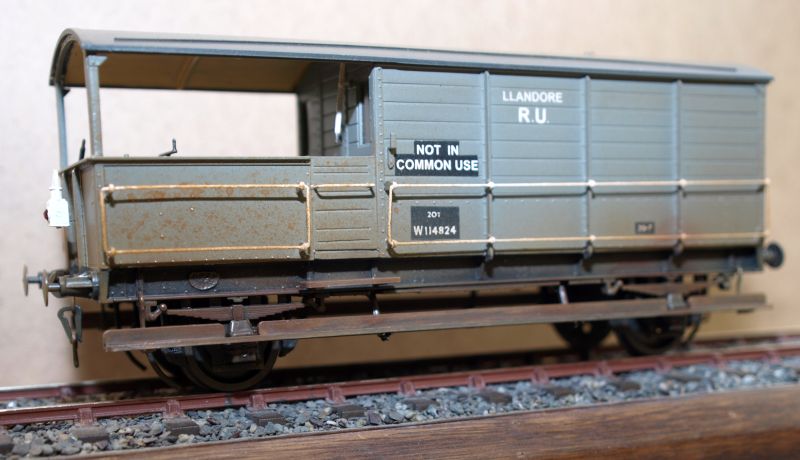
This diagram AA19 7mm Toad was made from a Parkside-Dundas kit. This is a remarkably detailed kit to which I only needed to add the 4 sand pipes. I didn't go to the extent of doing a detailed interior as this is almost unseeable.

Crane number 607 with its dedicated match trucks. The crane and its match truck were from a Meteor models kit with some additional detailing to the brake gear of the latter. The other match truck is from a Cooper-Craft kit. All are running on Slater's wheels which I chemically blacken for good effect. Weathering is with an airbrush and acrylic paints.
 |
This Tower Models Express Parcels railcar was lined and lettered from Fox transfer sheets. The cab interiors were fully detailed, with grill bars placed behind the windows after glazing. Additional pickups were placed on the unmotorised bogie and this improved the running considerably.
In the end a lovely and accurate representation of number 34 ensued. |
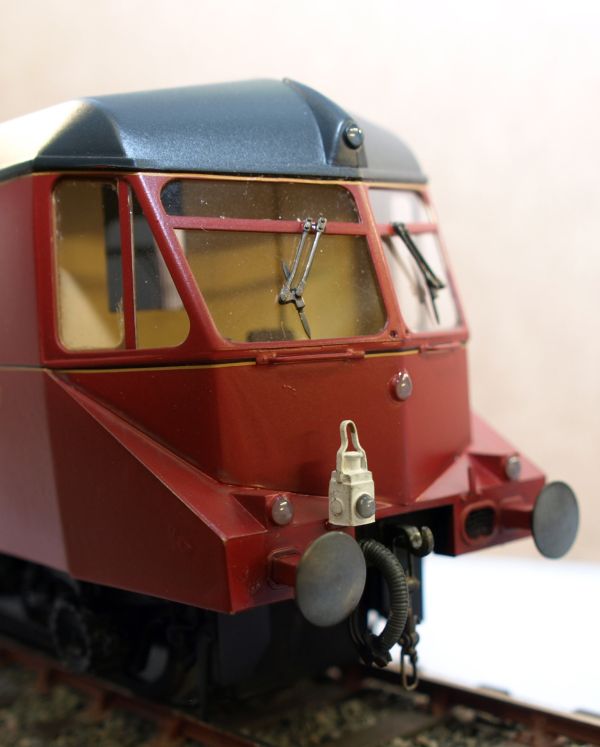 |
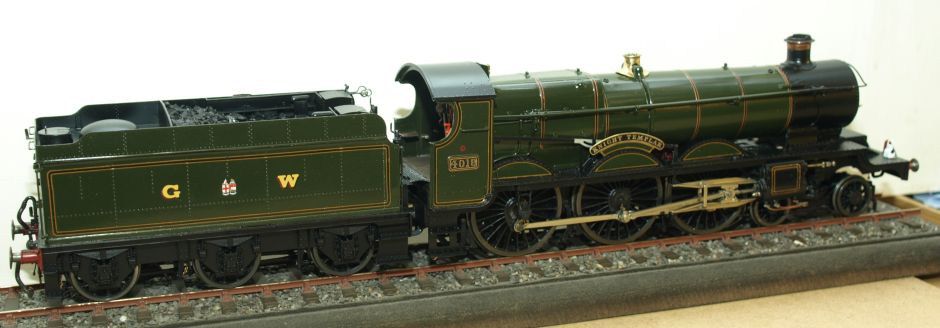
For sheer elegance, there's little to compare with Churchward's celestial 'Star' class, and Ted's recently completed 4019 "Knight Templar" was crafted from a 7mm scale Malcolm Mitchell kit in conjunction with the JLTRT super detailing kit, Slater's wheels and a Ron Chaplin motor & gear-box. The loco is depicted in late GW livery, running with a 4000 gallon tender.
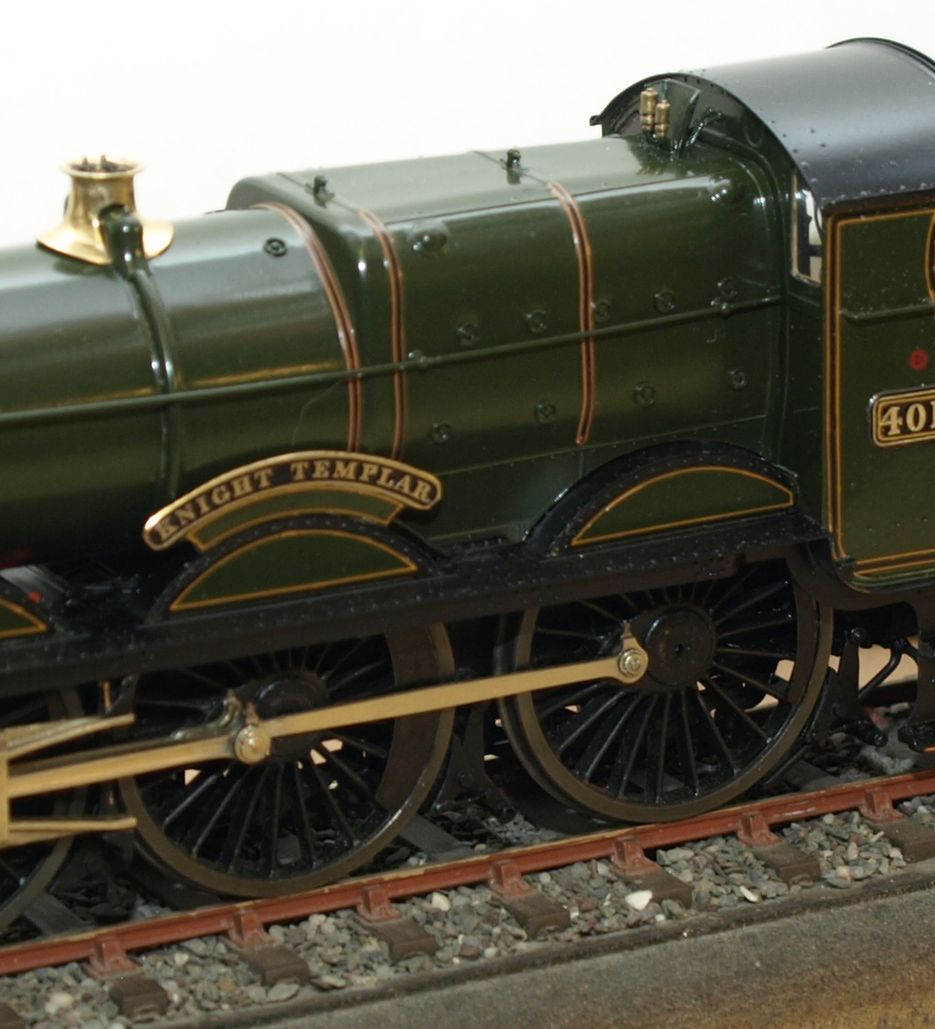
A close-up of the glorious ex-works finish Ted has achieved, and showing how GWR firebox lining always terminated on top of the firebox shoulder.
| A peek into the cab of 4019 |
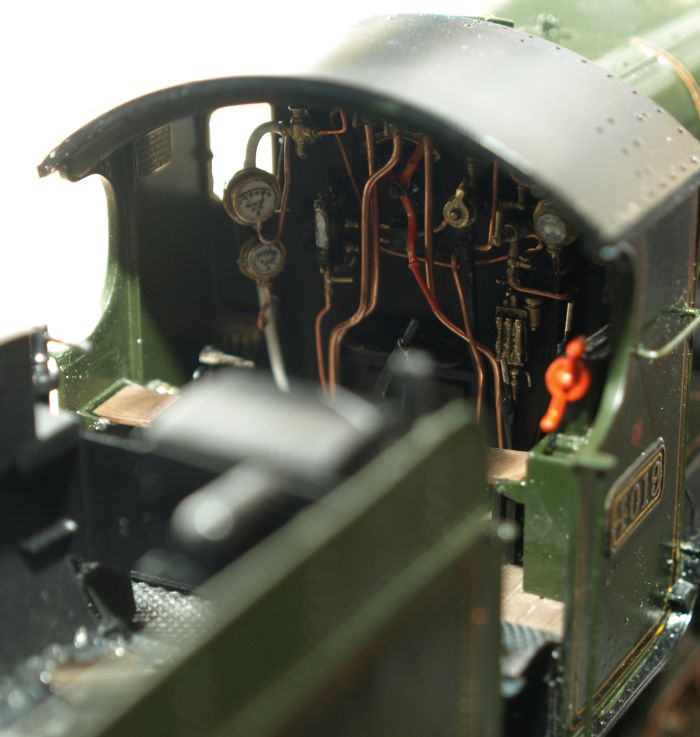 |
Ted writes: This is a GWR 2-4-2T Number 3614, nicknamed a 'Birdcage' due to its rather spacious cab, also known as the 36xx Class. The model was scratch-built in 4mm 00 finescale from nickel-silver sheet with most of the fittings turned on my Unimat 3 lathe by myself.
The smokebox door opens showing a fully detailed interior, and both the toolboxes open to display an array of tools.
The loco won me a cup at my local model railway club's annual competition – hence the fancy stand. |
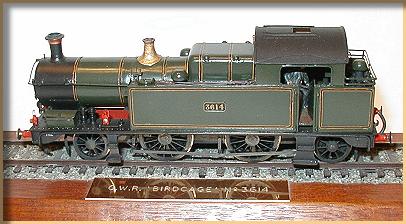
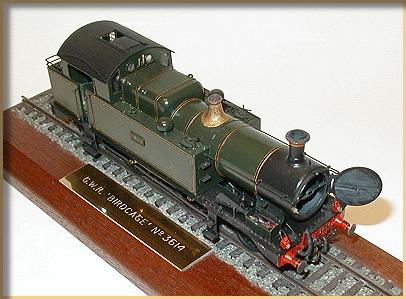
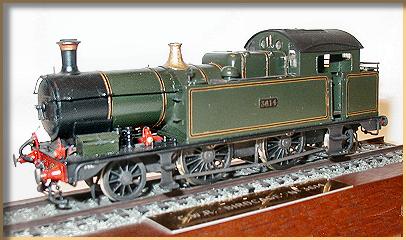 |
| The following pictures show a selection of Ted's past and present 4mm stock posing on the Grand Wulfrunian layout. More 4mm scale locos built by Ted can be seen on Niels Bo Rasmussen's page |
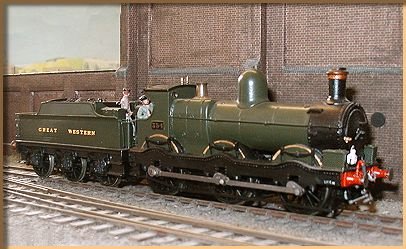
Beyer Goods 0-6-0 (with Belpaire boiler), built from a K's kit
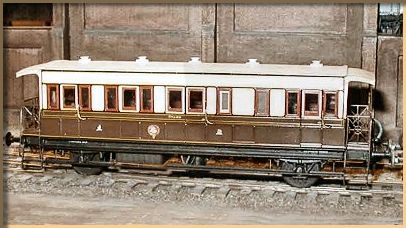
4-wheel Inspection Saloon, built from a Mallard kit
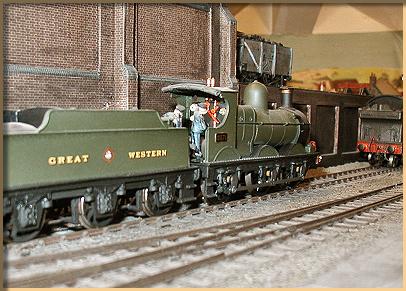
Dean 0-6-0 Outside Frame goods loco, built from a K's kit
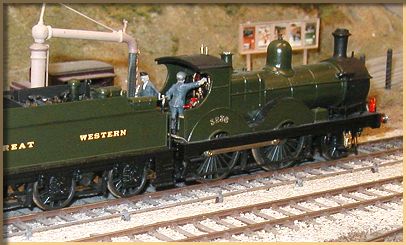
4mm 3232 Class 2-4-0 No. 3236, built from a Martin Finney kit
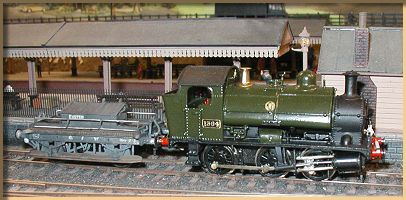
4mm 1361 class saddle tank No. 1364, built from a Peter K kit
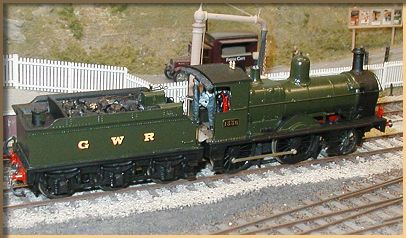
4mm ex-M&SWJR Dubs 2-4-0 No. 1336, built from a Cotswold kit |
Here is King Edward V No 6016, built to 4mm scale and seen on the Grand Wulfrunian. The loco is in the experimental blue that a few locos carried after nationalisation.
The body is from a Jameson kit, the chassis is Comet, with Romford & Ultrascale wheels, Portescap motor and a lot of additional bits from various model manufacturers. For the tender I opted for a bit of class: Martin Finney, and it does show.
The painting was done by me, but the lining was by Phil Coutanche with a bow pen.
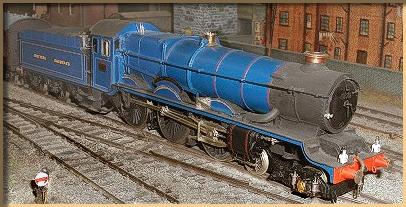 |
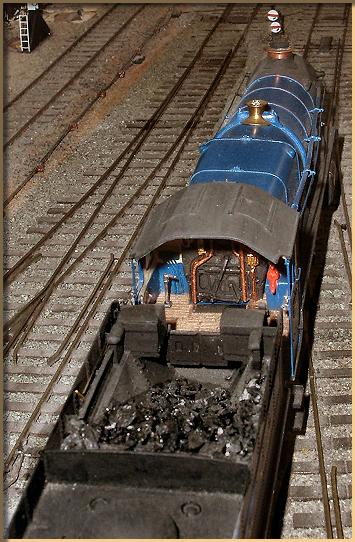 |
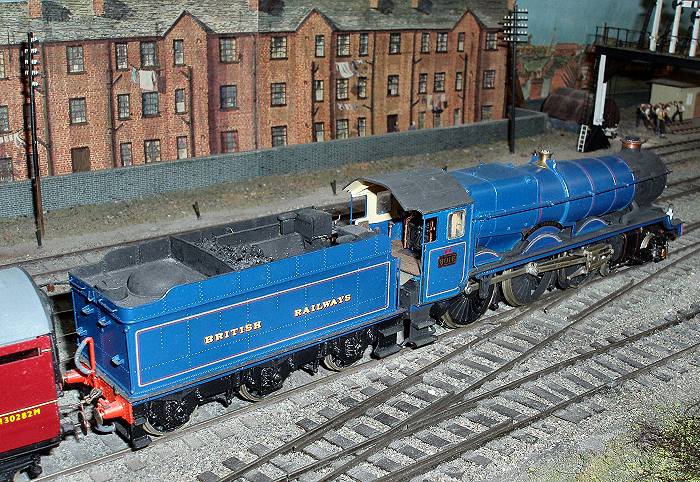
| These three workhorses were all built by Ted Kanas to 7mm O Gauge finescale. They are painted in the BR black livery, which suits them rather nicely. |
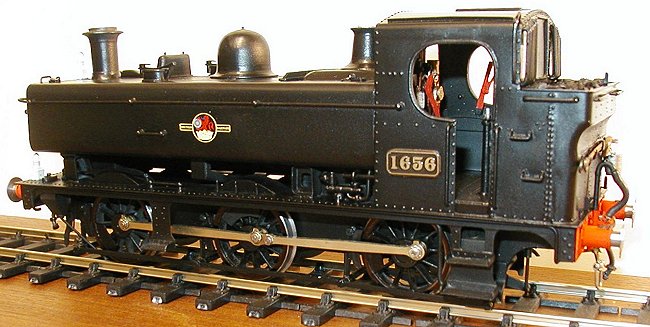
7mm 16xx Class No. 1656, built from a Warren Sheppard Kit
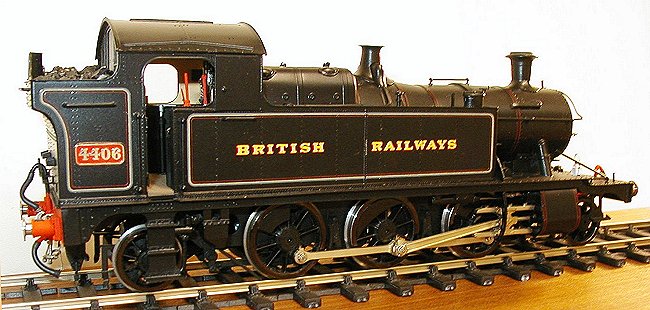
7mm 44xx Class No. 4406, built from a Malcolm Mitchell Kit
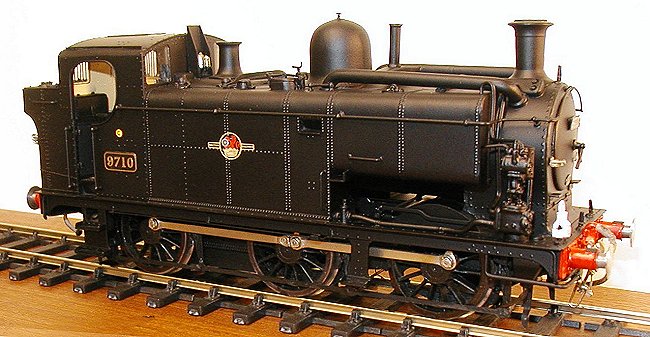
7mm 9701 Class No. 9710, built from a Scorpio Kit |
| Here's another batch of Ted's BR-liveried locos in 7mm scale. All were built and painted by himself, but the lining was done by hand by Phil Coutanche. |
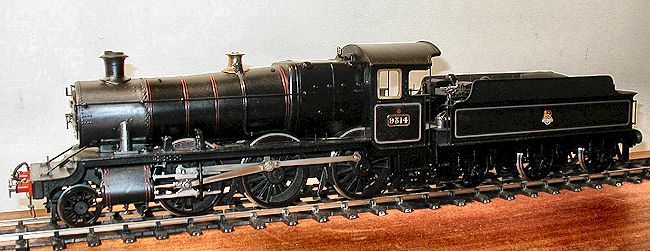
7mm 93xx Class No. 9314, built from a Springside kit

7mm 63xx Class No. 6364, built from a Pilgrim Models kit
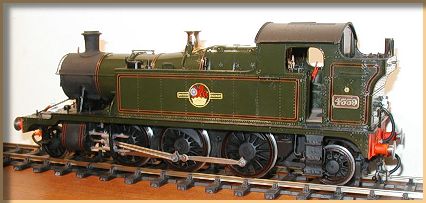
7mm 45xx Class No. 4559, built from a Springside kit |
Ted writes: This loco is No. 1506, built to 7mm finescale standards from an Oakville Kit. This was realy a labour of love – parts not fitting, distorted castings; a real difficult one to say the least. It necessitated a lot of scratch building and parts from other manufacturers such as Springside, Warren Shepherd, Microcast, Slater's to mention but a few.
The loco took 6 months but a pleasing result ensued. A 'chunky' heavy loco like the prototype, though the model is more a representation than a scale model due to its kit parentage. |
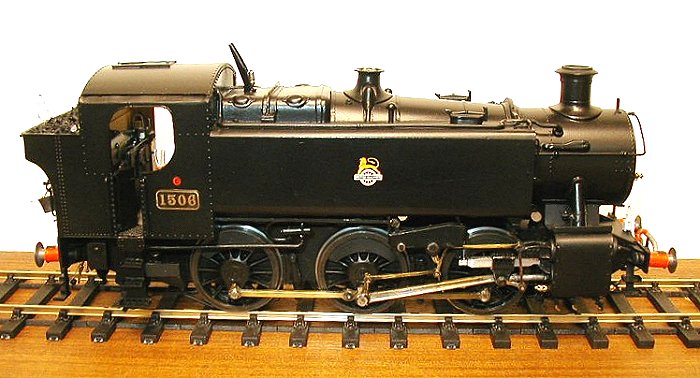
|
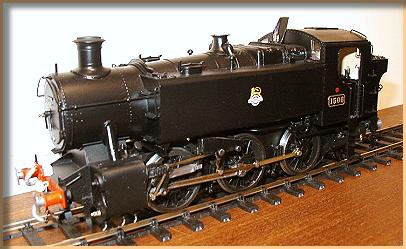 |
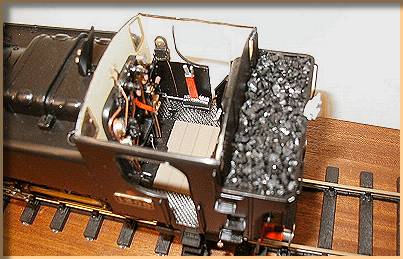 |
This one is 9452 (of which I have the cab side plate), built from a modified Oakville kit. The kit was a lot better than the 15xx Oakville kit, though still a lot of modifications and scratch-building was necessary with a lot of items from Springside, JLTRT & Premier Components.
The loco is finished in BR (W) black which I think suits the heavy look of the engine. The cab is fully detailed but I never like putting in a crew as I think that this obscures the fine detailing. |
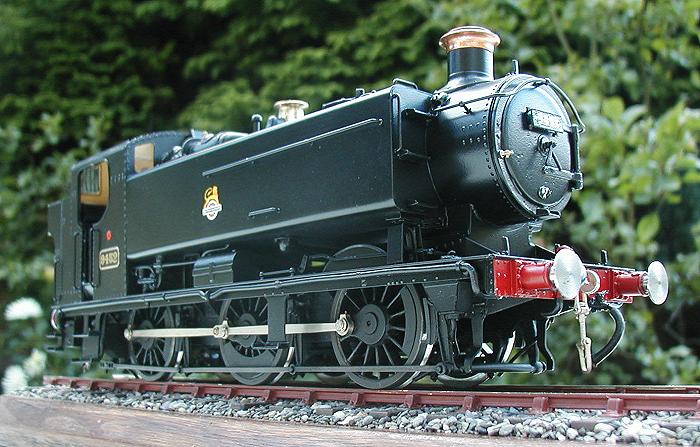
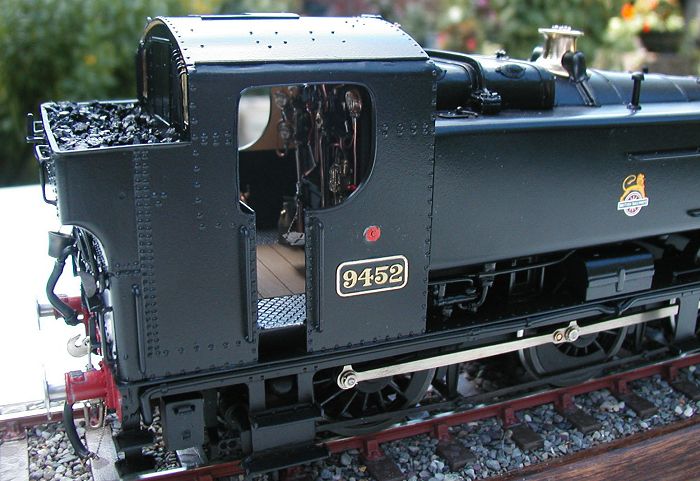
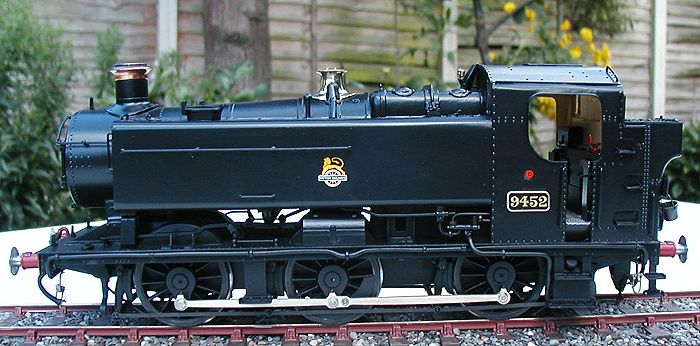
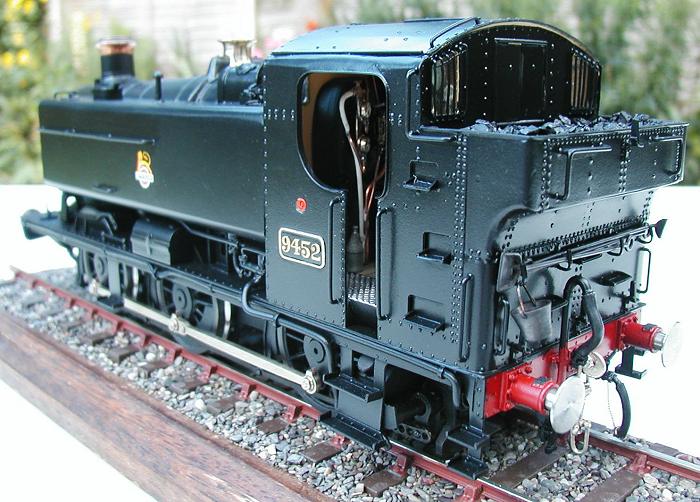 |
| In contrast to 9452, these are views of 9401 which I built about 4 years ago. This is almost a pure Springside kit build apart from the coupling rods. Believe it or not these are Oakville etched brass rods blackened with 'gun blue' – this gives a nice steel effect. |
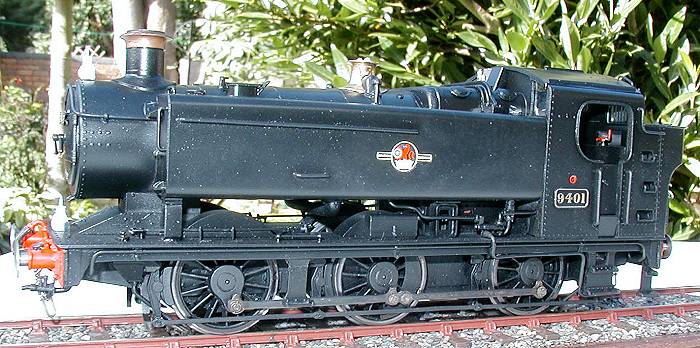
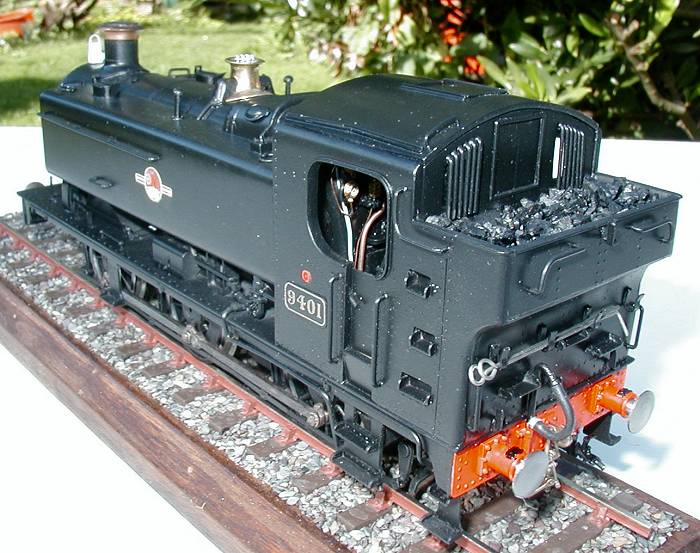 |
Here's the next loco that has just come out of the workshop. It's a ROD that the GWR bought at a knock down price from the Government after the First World War. It was brand new at the time and because of this lasted into the mid '50s before being taken out of service by BR(W).
The loco was built from a Gladiator kit and went together reasonably well. I feel that it captures that chunky heavy freight feel. |
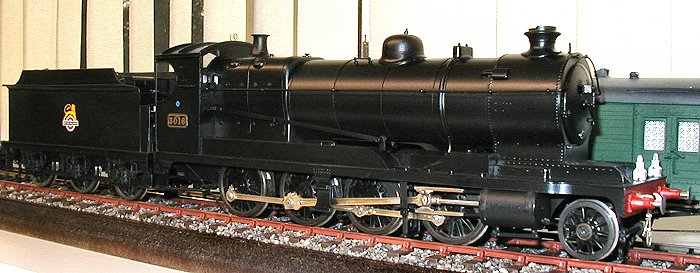
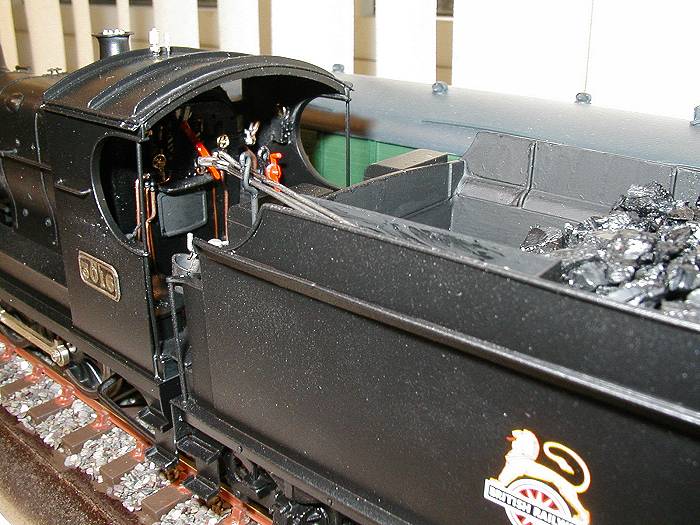
 |
Ted writes: Here's a new loco from my workshop. It's 6627 of the 56xx class – an 0-6-2 loco that was shedded at Reading (81D). The kit was from DA Model Engineering, costing at the time £89.70. In addition to this there were Slater's wheels, Mashima motor, gears, and bits and pieces from the spares box etc. All in all a reasonable kit at a very reasonable price that went together fairly well and I think stands up reasonably when compared to that deluxe kit from JLT.
The model has been finished in BR(WR) black with the early BR totem on the tank sides. As always it demonstrates my preference for that early BR period. |
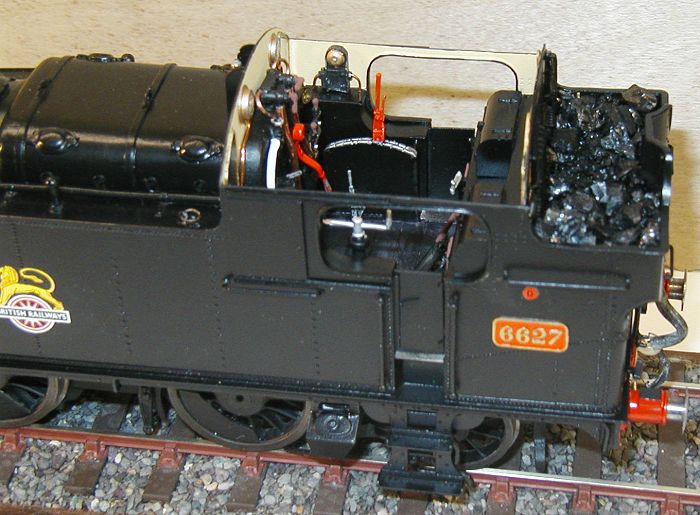
|
| Swindon did it their own way, even after nationalization. The Diesel-Hydraulic "Warship" Class 43s were certainly a proof of this, and here Ted brings us views of his own 7mm model of one of these beasts. You can read more about the Warships at the Great Western Archive. |

|
Another of the Western Region Diesels here – namely "Hymek" D7056 in 7mm scale, built from a JLTRT kit. Building this was a totally different experience – the kit is resin and needs superglue to put together. In addition to the standard kit, the cooling fan in the roof has been made to operate.
Though an expensive kit, the result when compared to the old Triang/Novo adaptation is the difference between Heaven & Earth.
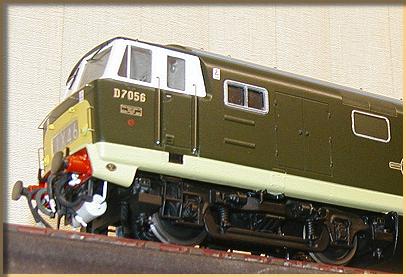 |
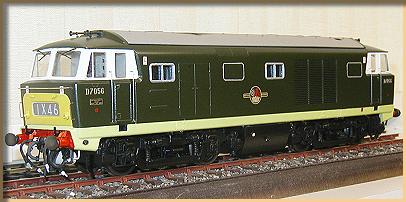
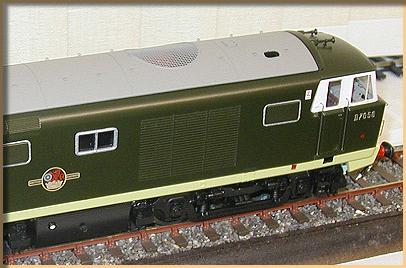 |
| GWR 6-wheel Passenger Brake Van diagram V13, built from a Colin Waite 7mm kit |
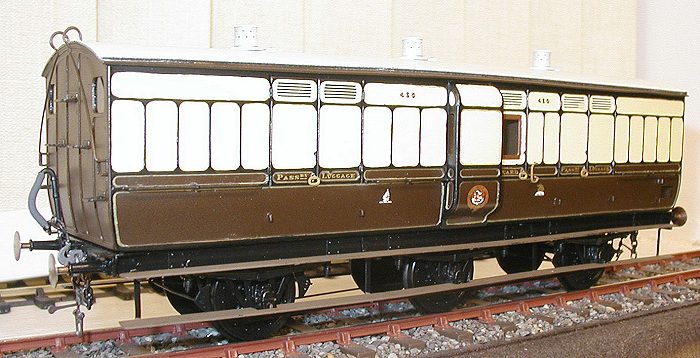 |
| GWR Horse Box Diagram N5, also a 7mm Colin Waite kit |
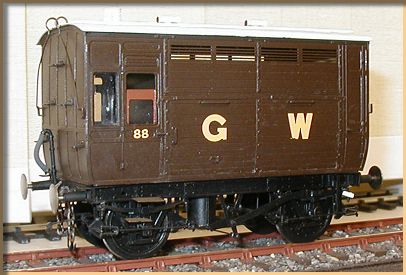 |
| GWR Mica B – built from a 7mm Perseverance kit |
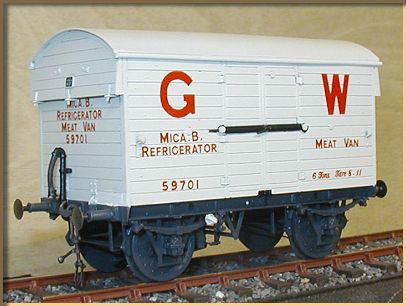 |

7mm Autotrain in BR Livery
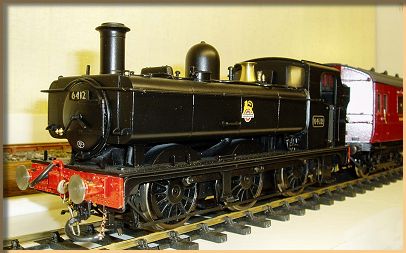
Auto-fitted 64xx Class No. 6412 in 7mm, built from a Springside kit |
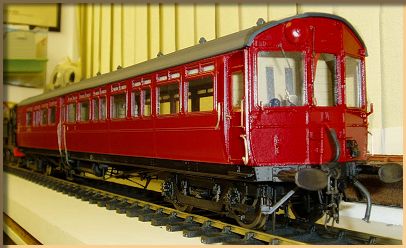
The 70' Auto Coach – built from a JLTRT 7mm kit |
| This is 28xx Class No. 2867 built to 7mm scale. The loco is produced from a modified Pilgrim Models kit, with a fair bit of modification done to it to make it more accurate. The loco runs on Slaters wheels, and is powered by an RG7 motor. I saw this loco way back in the early 1960s during my train spotting days in Wolverhampton. The loco is finished in late BR livery as outshopped from Stafford Road Works. |
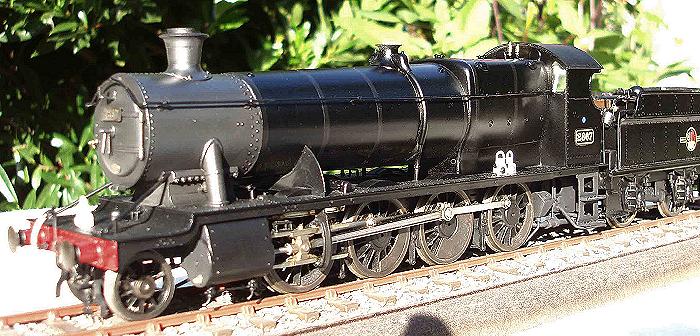
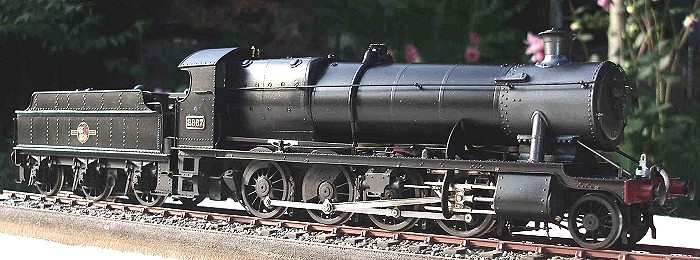
|
| Here then we have a County 4-6-0, namely No. 1005 "County of Devon". It's in 7mm finescale and made from a JM kit with Slaters wheels and a Kean-Portescap HP7 motor which makes for a very free-running engine. Generally an excellent kit that went together beautifully with all parts fitting accurately and giving the appearance and feel of that sadly neglected Hawkesworth 4-6-0 County. The backhead is from JLT and is certainly a vast improvement on the one supplied in the kit. Other details are as usual from my friend in Springside models and a moderate amount of scratch building. |
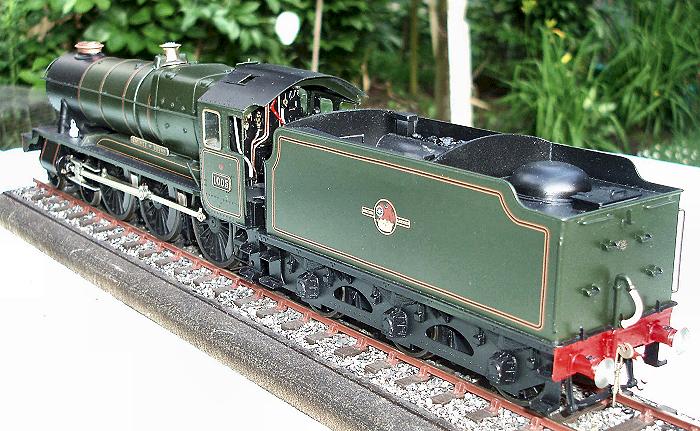
|
Dukedog No 9004 built to 7mm fine scale, from a Gladiator Kit.The Dukedog is powered by a Mashima 1833 motor, running on Slaters wheels. The loco has been finished in a grubby matt black. An addition to the loco was the boiler topfeed which was placed on a few of the class by BR.
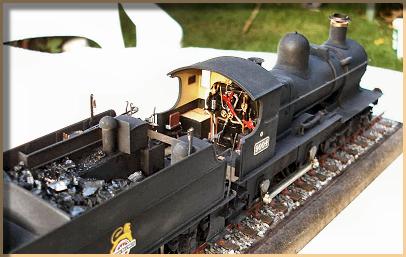 |
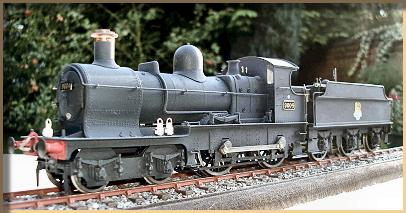
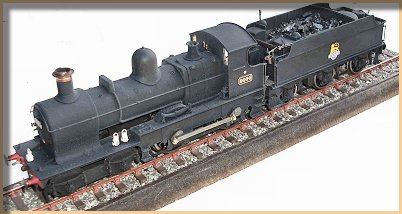 |
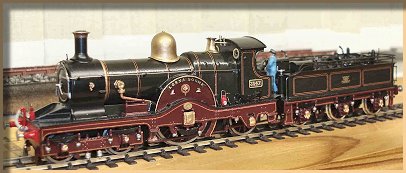 |
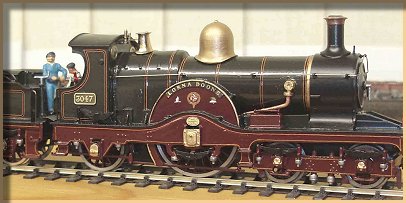
|
| One of the famous 'Achilles Class' Dean Singles in 4mm scale. This is No 3046 "Lorna Doone". It was built from a Premier M&L kit, out of the box but with super detailing. The loco is powered by an ancient K's HP2M motor (as recommended by the kit manufacturer) with Mike's models driving and trailing wheels. |
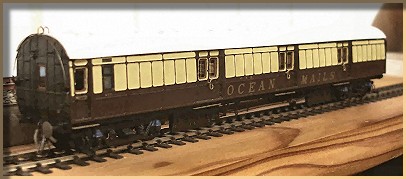
|
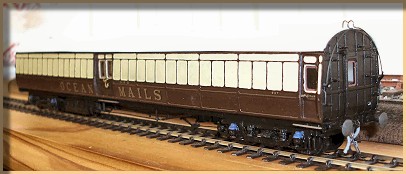 |
| Ocean Mails 'slip-coach' No 837 to Diagram M8 in 4mm scale. This was built from a Hayes Production kit that I bought off Pete Waterman many years ago when he was still running that modelling company. |
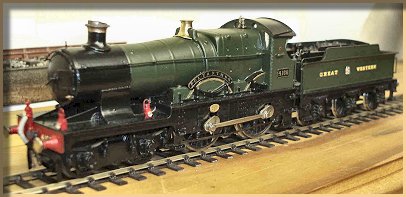 |
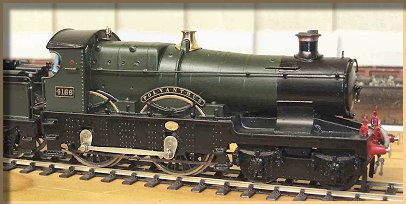
|
| Flower Class No 4166 'Polyanthus' in 4mm scale. This was built from Sutherland Models 'Cotswold' kit, virtually as out of the box but with super-detailing.The loco is powered by a Romford 5 pole motor and uses the kit's milled brass chassis. It's finished in post WWI unlined green livery. |
| This is 4091 Dudley Castle built from a Malcolm Mitchell 7mm kit with super detailing from a JLTRT add on. It is powered by a Buhler motor with a Ron Chaplain gear box (so it runs superbly) and uses Slaters wheels. The tender is on sprung Slaters hornblocks and is finished in BR(W) Region green. Regrettably I don't ever recall seeing this loco as it was one of the first Castles to be scrapped in 1958, probably due to an accident that it sustained with an LMS built 8F in the early 1940s. |
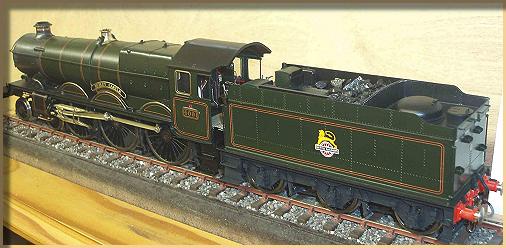
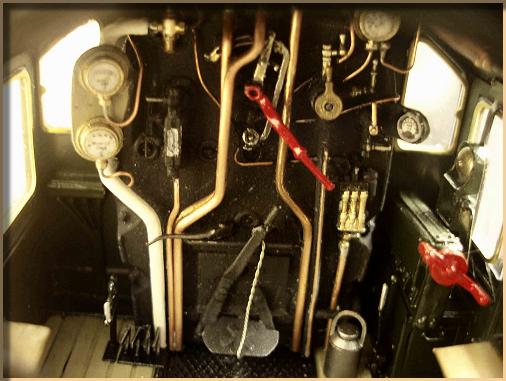
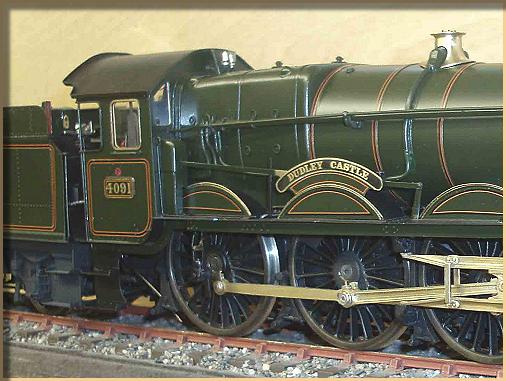 |
| "Tudor Grange" built to 7mm scale. This was constructed from a Malcolm Mitchell kit with a few modifications and added details. These kits are excellent and it went together very well. it is finished in late crest BR(W) livery. |
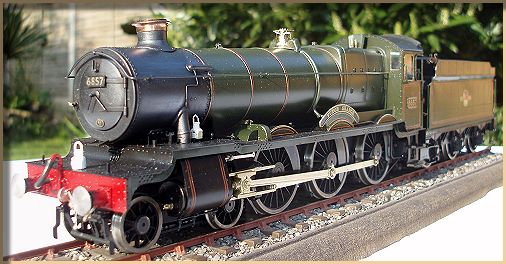 |
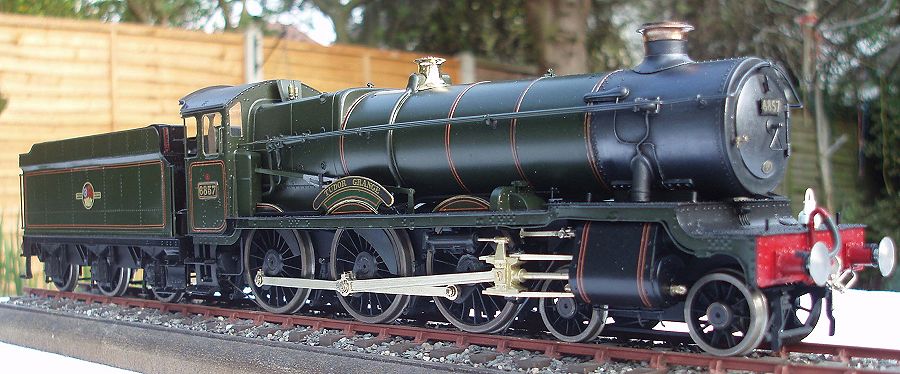
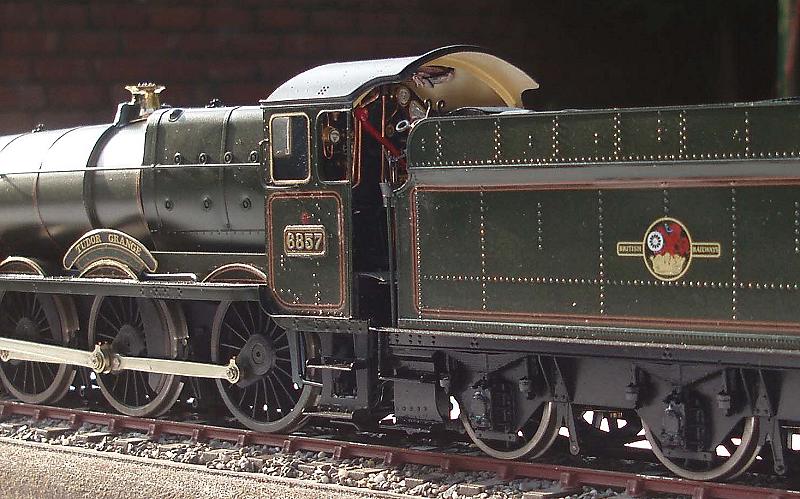
| Pannier 7437 was built from a 7mm Castle kit, which is cast whitemetal and is incredibly heavy, so its traction is incredible. Whitemetal does have the drawback that there is some surface porosity but with a bit of work this can be filed and flattened down and so mostly smoothed. With the addition of some extra bits it can be made into a very presentable representation of the prototype. |
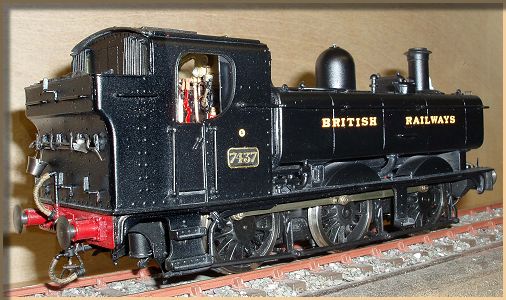
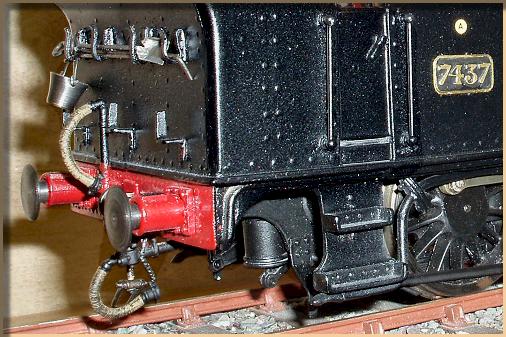 |
| Here is No. 6771, constructed from a Scorpio etched brass kit. I thought that a bit of weathering might not go amiss as it was a pure workhorse shunting loco. All of the 67xx class only had a steam brake and no vacuum brake. I constructed this model as I posses one of its cab cast brass number plates. |
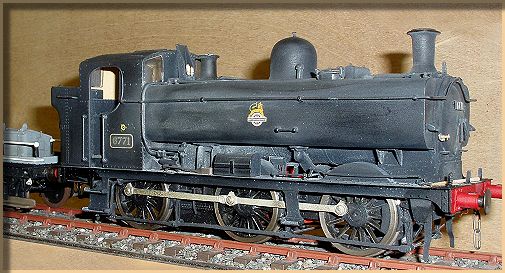 |
| No. 6771 runs with this attached shunting truck. They make for a nice pair, though in real life I don't think that they would have been paired together as the loco was located in South Wales and the shunting truck was in Bilston in the 'Black Country'. |
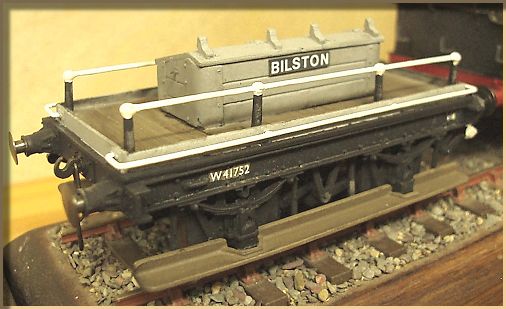 |
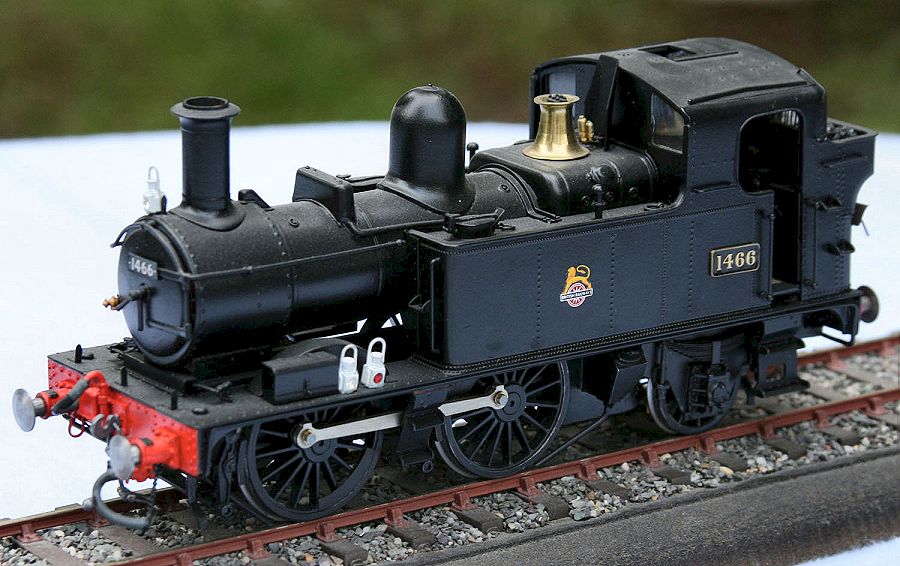
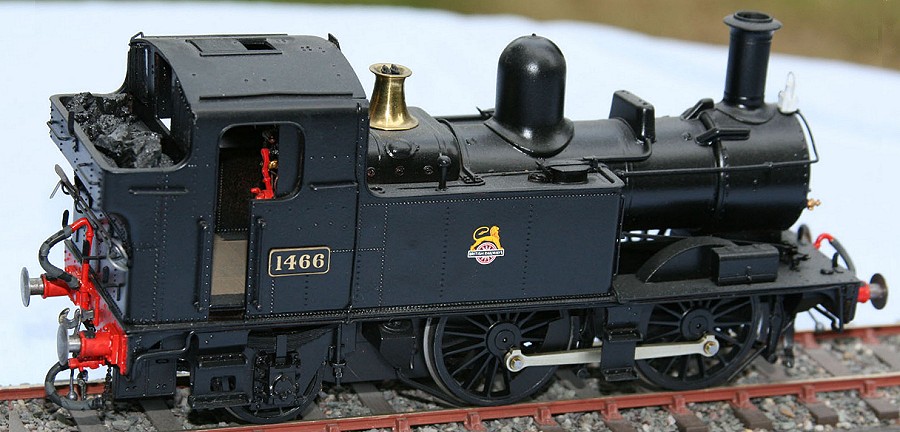
7mm scale 14xx No. 1466, constructed from a Springside kit with some modifications and personalizing. In full black with the early BR lion totem.
| Also in 7mm scale, here is an 0-4-0ST Peckett No. 1151 (GWR No. 779). This was built in 1907 for the contractors Powesland & Mason and eventually absorbed by the GWR. The loco was built from a Springside kit. |
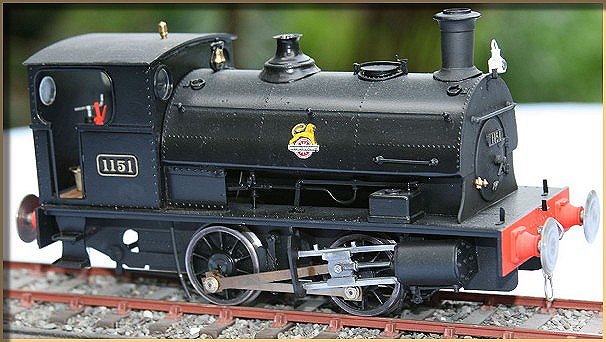
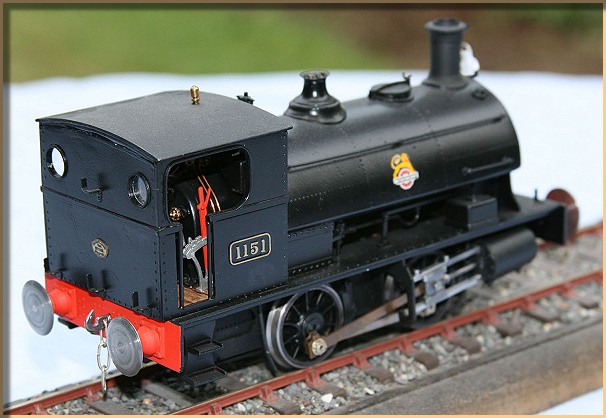 |
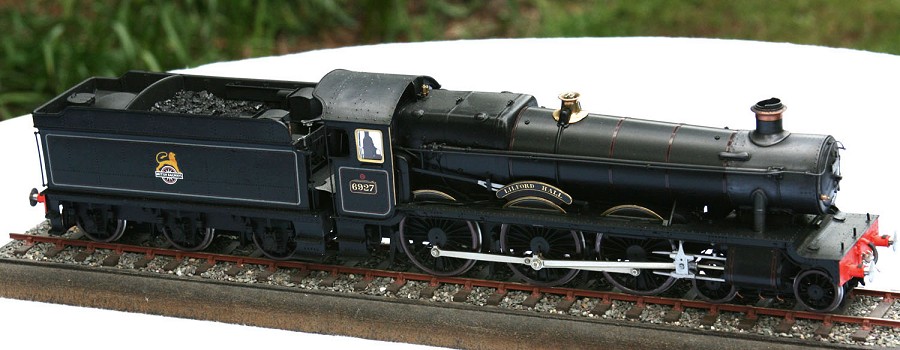
6927 "Lilford Hall", yet another 7mm scale Springside kit
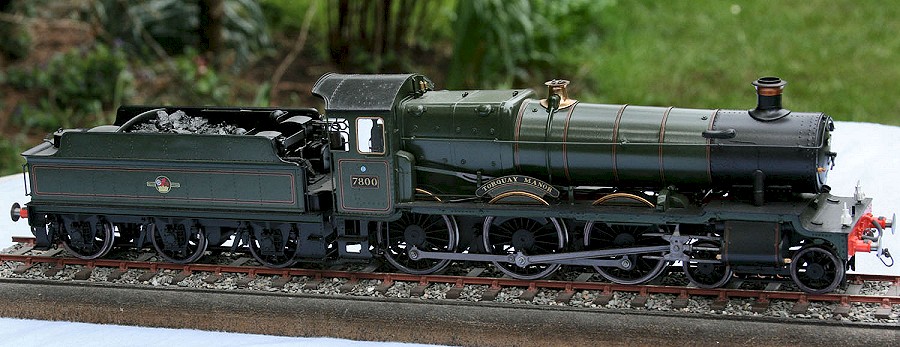
7800 "Torquay Manor" in BR green with the later lion totem
| Collett Goods 0-6-0 No. 3205, built to 7mm scale from a Springside kit. There's plenty of daylight under that boiler! |
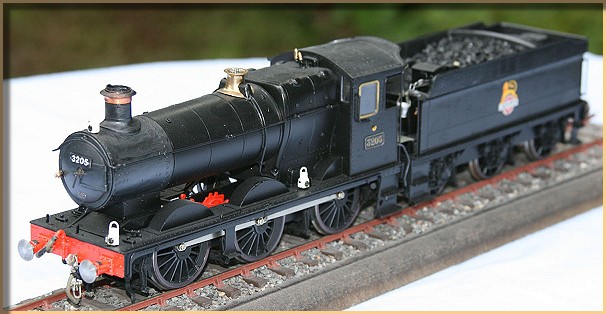
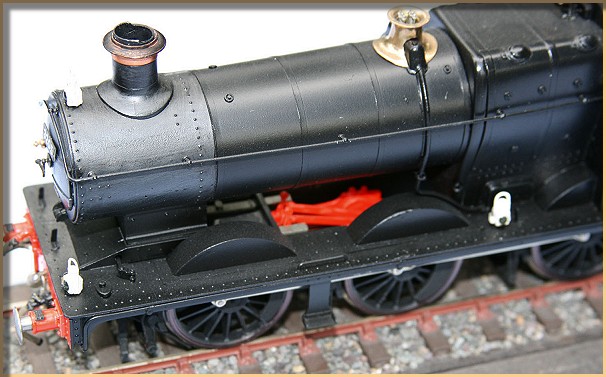 |
| A model of P.S. Great Western, a paddle steamer designed by the greatest engineer of his time – a certain Isambard Kingdom Brunel. It was built from an Airfix kit. 'Great Western' was built in 1837 for the Great Western Steam Ship Company in Bristol, for use in the transatlantic trade. At the time she was the first true ocean-going steamship, and the largest of its kind in the world. The ship later sailed on the Southampton to West Indies mail route under the Royal Mail Steam Packet Co, and was also used for troop transport by the Admiralty, including to the Black Sea. She was scrapped in 1857. |

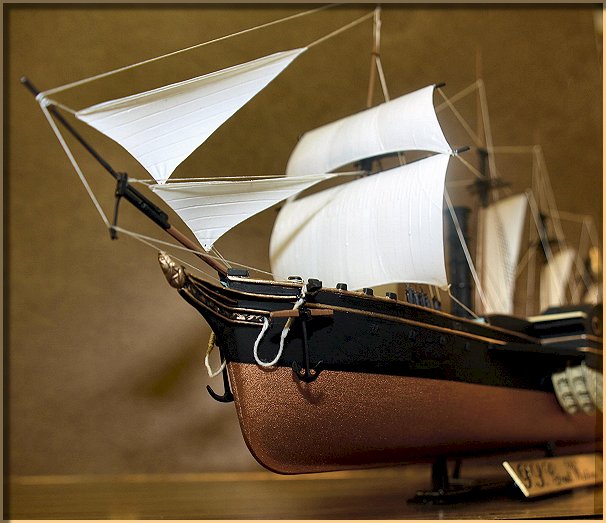 |
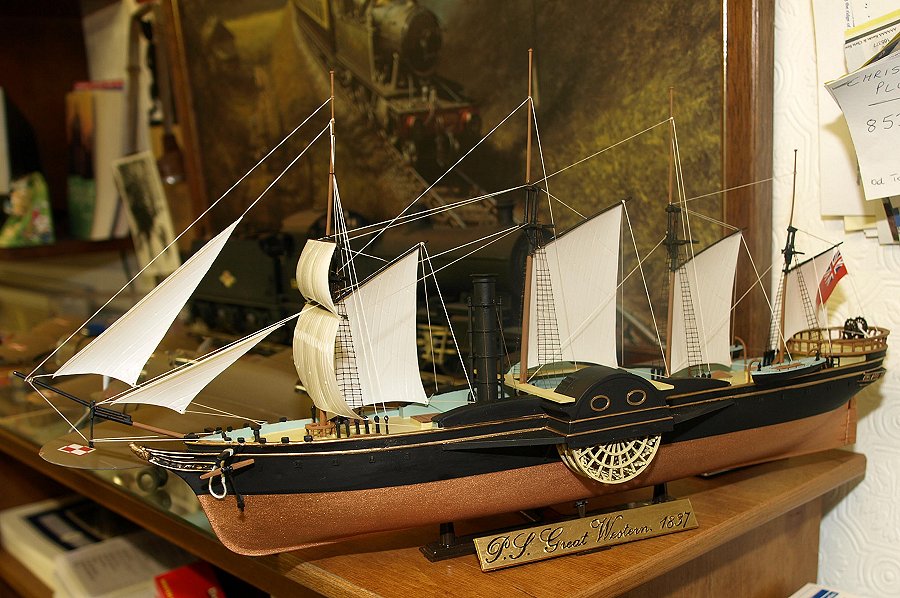
|